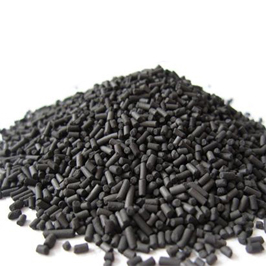Food Industry
Home-Product-Food Industry-Food Industry

Activated carbon
Shape appearance:
Black powder or block, granular, honeycomb-shaped amorphous carbon, and regular crystalline carbon.
Black powder or block, granular, honeycomb-shaped amorphous carbon, and regular crystalline carbon.
- Previous:
- Soda ash (sodium carbonate)
- Next:
- No Products
Product Description
Product Usage:
As an environmentally friendly adsorbent, activated carbon has strong adsorption and catalytic properties, sufficient raw materials and high safety, acid and alkali resistance, heat resistance, insoluble in water and organic solvents, and easy regeneration. Organic pollutants such as benzene compounds, phenolic compounds, petroleum and petroleum products, etc. have strong adsorption capacity, and have a strong adsorption capacity for organic pollutants that are difficult to remove by biological methods and other chemical methods, such as color, methylene blue surface active substances, and weeding Chemicals, pesticides, synthetic dyes and many synthetic organic compounds have good removal effects; in addition, activated carbon also has a strong adsorption capacity for heavy metals in electroplating wastewater and smelting industrial wastewater; it can clearly clarify the turbid water quality It can remove the peculiar smell and odor in the water, and it also has an excellent filtering effect on bacteria. Therefore, activated carbon has received more and more attention in water treatment. However, ordinary activated carbon has the characteristics of high ash content, small pore volume, excessively wide micropore distribution, small specific surface area and poor adsorption selection performance, coupled with some restrictions on its surface functional groups and electrochemical properties, making it adsorb pollutants The removal effect is limited, far from meeting the requirements of domestic and foreign markets. Therefore, it is necessary to modify its structure and properties to increase its adsorption capacity and ease the pressure of water pollution.
Warehousing and transportation:
1. Transportation, loading and unloading: Activated carbon should not be dragged with iron hooks during transportation. It should be prevented from being mixed with hard materials. It should not be strongly vibrated, rubbed, stepped or smashed. Throwing is strictly forbidden. It should be handled with care and unloaded to reduce carbon particle breakage. ,Affect.
2. Storage: It should be stored in a cool, dry, fireproof building as much as possible to prevent the inner and outer packaging bags from rupturing, and prevent moisture and adsorption of other substances in the air, which will affect the use effect. It is strictly forbidden to mix with toxic and harmful gases or volatile substances, and keep it away from pollution sources. Do not mix with oxidants; open flames, sparks and smoking are prohibited in the storage place.
Safety Precautions:
Wet activated carbon needs to remove oxygen from the air. The consumption of oxygen in a safe and airtight container will create a toxic environment. If workers enter a container containing activated carbon for proper sampling or work in a low-oxygen space, they should comply with relevant national standards and operations. specification.
Leakage: Isolate the leaked contaminated area and restrict access. Cut off the fire source. It is recommended that emergency response personnel wear self-contained breathing apparatus and wear protective clothing.
Inhalation: quickly leave the scene to fresh air. Keep the airway open. If breathing is difficult, give oxygen. If breathing stops, give artificial respiration immediately. Seek medical attention.
Ingestion: Rinse mouth with water. Seek medical attention.
Skin contact: Take off contaminated clothing immediately and rinse with plenty of running water for at least 15 minutes. Seek medical attention.
Eye contact: Lift the eyelids immediately, rinse thoroughly with plenty of running water or normal saline for at least 15
As an environmentally friendly adsorbent, activated carbon has strong adsorption and catalytic properties, sufficient raw materials and high safety, acid and alkali resistance, heat resistance, insoluble in water and organic solvents, and easy regeneration. Organic pollutants such as benzene compounds, phenolic compounds, petroleum and petroleum products, etc. have strong adsorption capacity, and have a strong adsorption capacity for organic pollutants that are difficult to remove by biological methods and other chemical methods, such as color, methylene blue surface active substances, and weeding Chemicals, pesticides, synthetic dyes and many synthetic organic compounds have good removal effects; in addition, activated carbon also has a strong adsorption capacity for heavy metals in electroplating wastewater and smelting industrial wastewater; it can clearly clarify the turbid water quality It can remove the peculiar smell and odor in the water, and it also has an excellent filtering effect on bacteria. Therefore, activated carbon has received more and more attention in water treatment. However, ordinary activated carbon has the characteristics of high ash content, small pore volume, excessively wide micropore distribution, small specific surface area and poor adsorption selection performance, coupled with some restrictions on its surface functional groups and electrochemical properties, making it adsorb pollutants The removal effect is limited, far from meeting the requirements of domestic and foreign markets. Therefore, it is necessary to modify its structure and properties to increase its adsorption capacity and ease the pressure of water pollution.
Warehousing and transportation:
1. Transportation, loading and unloading: Activated carbon should not be dragged with iron hooks during transportation. It should be prevented from being mixed with hard materials. It should not be strongly vibrated, rubbed, stepped or smashed. Throwing is strictly forbidden. It should be handled with care and unloaded to reduce carbon particle breakage. ,Affect.
2. Storage: It should be stored in a cool, dry, fireproof building as much as possible to prevent the inner and outer packaging bags from rupturing, and prevent moisture and adsorption of other substances in the air, which will affect the use effect. It is strictly forbidden to mix with toxic and harmful gases or volatile substances, and keep it away from pollution sources. Do not mix with oxidants; open flames, sparks and smoking are prohibited in the storage place.
Safety Precautions:
Wet activated carbon needs to remove oxygen from the air. The consumption of oxygen in a safe and airtight container will create a toxic environment. If workers enter a container containing activated carbon for proper sampling or work in a low-oxygen space, they should comply with relevant national standards and operations. specification.
Leakage: Isolate the leaked contaminated area and restrict access. Cut off the fire source. It is recommended that emergency response personnel wear self-contained breathing apparatus and wear protective clothing.
Inhalation: quickly leave the scene to fresh air. Keep the airway open. If breathing is difficult, give oxygen. If breathing stops, give artificial respiration immediately. Seek medical attention.
Ingestion: Rinse mouth with water. Seek medical attention.
Skin contact: Take off contaminated clothing immediately and rinse with plenty of running water for at least 15 minutes. Seek medical attention.
Eye contact: Lift the eyelids immediately, rinse thoroughly with plenty of running water or normal saline for at least 15






 13603024855
13603024855 Follow us
Follow us